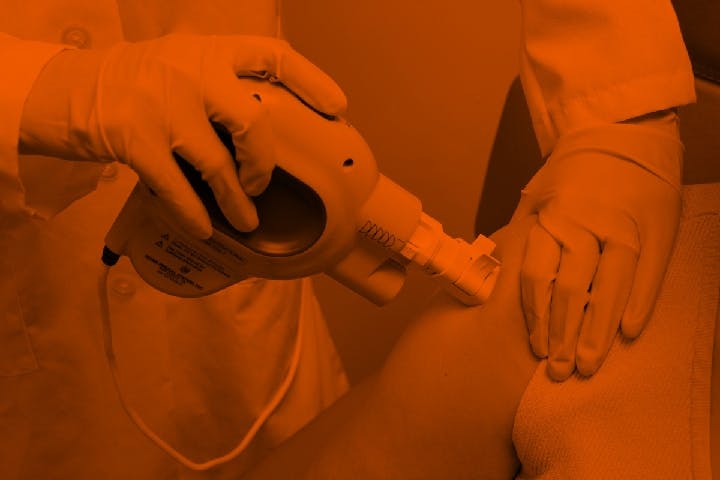After the Arab Spring, an HIV/AIDS crisis
– Isabel Larroca
Countries in the Middle East and North Africa currently face major hardships — political unrest, extreme violence, and economic decline among them. From these has sprung a new threat: the heightened risk of HIV/AIDS infection.
For many Americans, the idea of an HIV/AIDS crisis conjures images of the 1980s, when sensationalized and ill-informed news reports stoked hysteria and stigma. In present-day America, updates on the virus are far more scarce, and what is reported often contributes to an increasingly optimistic outlook. The world has seen a global decrease in new HIV infections and AIDS-related deaths, and new treatment possibilities appear abundant; just within the last few weeks, reports have excitedly relayed news of a chemical compound that can block the virus’s access to sugar and nutrients, effectively “starving HIV to death.”
In the Middle East and North Africa, HIV’s story is a very different one. In the World Policy Journal, Christopher Reeve writes that the United Nations estimates that the region saw 25,000 new infections and 15,000 AIDS-related deaths in 2013, increases of 9 percent and 70 percent, respectively, over 2005 levels. An estimated 230,000 HIV-positive people live in the region.
The virus’s resurgence is only further aggravated by post-Arab Spring political turmoil. Bureaucracy, discrimination, the vulnerability of refugees, increased violence, and loss of funding have all made combatting the spread of HIV and caring for those already infected immensely challenging.
In Egypt, those living with HIV face the combination of a repressive political environment and stifling bureaucracy. After the ousting of President Hosni Mubarak in 2011, Islamists saw overwhelming victories in parliamentary elections, culminating in the election of the Muslim Brotherhood’s Mohamed Morsi to the presidency in June 2012. With this shift in power came an increase in public displays of religious devotion, which arrived arm-in-arm with cutbacks in public discourse on issues of sex, sexuality, and sexually transmitted infections. Morsi’s removal from power by the Egyptian military in the summer of 2013 did little to curb this trend. In an attempt to prove its conservatism, the military regime has conducted numerous raids and arrests of gay men and transgender women under Egypt’s debauchery laws. Reeve writes that possession of HIV medication has been used by the new government as “a pretext for arrest.”
While stigma and discrimination deter many HIV-positive people from seeking medical attention, those who do receive treatment face even further obstacles from Egypt’s Ministry of Health. Under Egypt’s National AIDS Program, the ministry is supposed to provide free medication to Egyptians living with HIV. Yet medicine is often unavailable at distribution centers, leaving many individuals without treatment for months at a time. Without consistent treatment, the virus develops a resistance to drugs; once again, the ministry is unprepared to help: its equipment for testing white blood cell count, viral load, and viral resistance to drugs is inoperative.
As relates to HIV/AIDS in the Middle East and North Africa, Egypt is only the tip of the proverbial iceberg. In Syria, civil war and Islamic State militants have driven millions of refugees into neighboring countries, including Lebanon and Jordan. Such extreme numbers have placed serious burdens on both countries — particularly economically — as a huge influx of people without jobs or housing look for means to provide for their families. Among other pressures, these strains have driven some Syrian refugees to sex work and early marriages, while also increasing gender-based and sexual violence — all of which increase the risk of spreading HIV.
Both Lebanon and Jordan have faced problems securing funds to fight the virus, as the sheer scale of the refugee population has made it difficult to shake free the needed money. Frustratingly, despite an inbound stream of impoverished refugees, Jordan is technically ineligible to receive money from the Global Fund to Fight AIDS, Tuberculosis, and Malaria, due to the nation’s status as an “upper middle-income country.” Other efforts — such as the provision of rape kits with preventative HIV medication, and increased sexual and reproductive health education — are hindered by fear of stigma.
In Libya, those infected with HIV face paralyzing political instability and security concerns. Due to the closure of airfields and seaports, medications cannot be imported, leaving the country with precious little time before its current stock of medicine runs out. Political instability and conflict has disconnected Tripoli (in the west) from Benghazi (in the east), forcing Libyans there who want treatment to cross their war-torn country to receive it in the capital city. If, in the process, a militia with the wrong sympathies catches them carrying medications, their lives could be on the line.
Serious action must be taken if the region hopes to effectively control HIV/AIDS. Of course, with the affected countries facing such a broad array of other concerns, prioritizing anti-HIV/AIDS efforts in a region already fraught with violence, political uncertainty, and economic hardship would be no small feat. But to do nothing would be to give the virus the perfect environment to thrive, and potentially pile onto an Arab Spring death toll already in the hundreds of thousands.
* * *
The Source: Christopher Reeve, “HIV & the Arab Spring: An Unseen War,” World Policy Journal 32.1 (2015): 108-117.
Photo courtesy of the Gates Foundation
